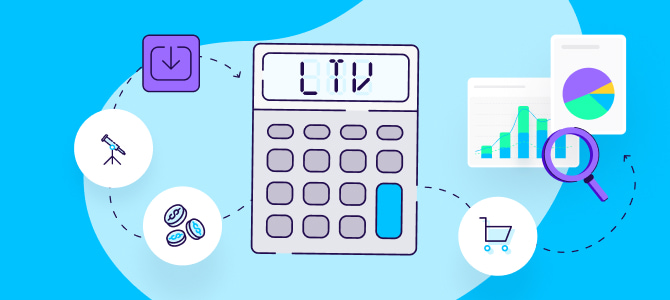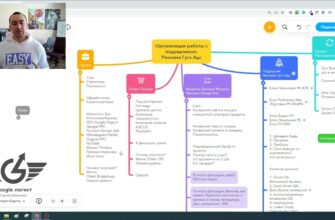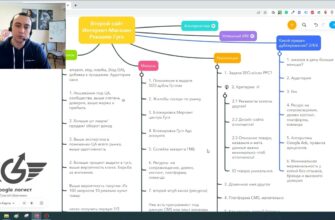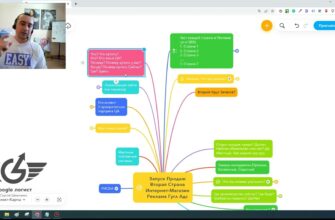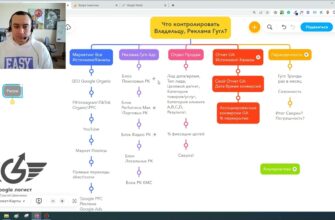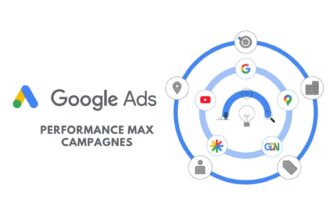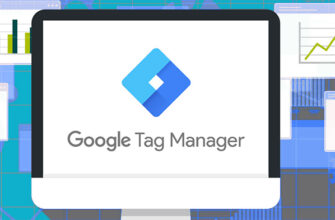- What is LTV?
- Why do you need an LTV metric?
- Which companies care more about the lifetime value of a customer?
- Who doesn’t need an LTV calculation?
- How to calculate a customer’s LTV?
- The simplest formula for calculating LTV
- A more complicated way to calculate LTV
- The most accurate methodology for determining the indicator
- What metrics affect LTV?
- CAC (cost of customer acquisition)
- ROI (return on investment)
- Churn Rate (customer churn rate)
- ARPU
- How can the lifetime value of a customer be increased?
- Use email newsletters
- Get feedback
- Connect a loyalty program
- Stay connected 24/7
- Interact with the customer on different platforms
- Use cross-selling
- Personalize offers
- Run promotions on social media
- Create a referral program
The success of any business largely depends on customer loyalty. Regular customers not only ensure the flow of sales, but also become a kind of brand ambassadors, attracting attention to it through word of mouth. However, not all customers bring the business the same income.
Of course, everyone wants to maximize the value of any customer relationship. But in reality, value can vary widely depending on preferences, ability to pay, the source from which the customer came to you, and a host of other factors. Some people buy things frequently and spend large sums of money, while others buy things infrequently and little by little.
To understand the contribution of each customer to the overall margin of the company and optimize advertising costs, marketers use a special metric – LTV customer. This indicator allows you to predict the future profit from the attracted lead and evaluate the effectiveness of the cost of attracting and retaining him.
If we briefly answer the question of why LTV is needed, we can say that it allows us to look into the future and understand whether investments in marketing aimed at a particular audience segment will pay off. This makes it possible to allocate budget more effectively, focus on the most promising groups of the target audience and ultimately increase revenue.
What is LTV?
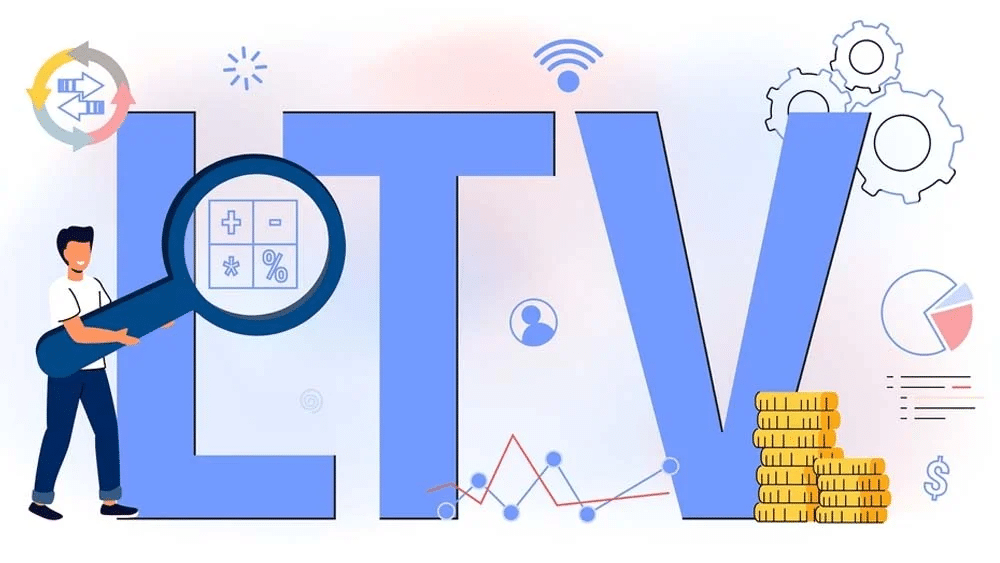
The term LTV (Lifetime Value) first appeared back in 1988 and was originally used when selling goods through catalogs. Today, it is widely used in a variety of industries, from retail to SaaS. Sometimes the abbreviations CLV or CLTV (Customer Lifetime Value) are used to denote the same metric.
If a customer regularly buys a brand’s products, recommends it to friends, and participates in loyalty programs, his lifetime value will be high. Conversely, if they buy something only once and never come back, LTV will be low.
When calculating the lifetime value of a customer, not only profit is taken into account, but also retention costs, production and delivery costs, etc. That is, CLV shows the business owner exactly the net revenue, not the total revenue.
In essence, CLTV shifts the focus from one-time purchases to building long-term trusting relationships. After all, even a small increase in this metric can generate a significant cash inflow on a long-term basis. For example, according to the book “Marketing Metrics”, the average chances of selling a product to a new customer are only 5 to 20%, while for repeat sales they are much higher – from 60 to 70%.
Why do you need an LTV metric?
In order for a business to bring its owner constant profit, the total profitability brought by one client must exceed the cost of attracting and retaining them by at least 300-400%. Knowing LTV will help you understand if this criterion is a reality for your line of business.
By tracking this metric on a regular basis, you will be able to:
- Optimize your customer acquisition costs. LTV provides the ability to calculate the maximum allowable CAC (cost of customer acquisition). Knowing the average profit received from one person for the entire time of interaction with him, you can determine how much money you can invest to attract him. For example, if the long-term LTV is 10,000 hryvnias, the CAC should not exceed this amount, otherwise you will get losses. Ideally, the indicator should be less than the price of attraction by several times.
- Forecast the return on investment in marketing. Lifetime Value makes it possible to estimate when advertising and promotion costs will pay off. Thus, if for a year of work a regular customer on average brings the company 60 000 hryvnias, and 20 000 hryvnias are spent on attracting a lead, the investment will pay off in 4 months.
- Determine the most effective channels of promotion. It is enough just to calculate the LTV for the leads that each individual traffic source brought, and you can determine which channel is the most effective and brings in the most revenue. This will allow the business to focus on the most promising areas and reduce investments in the rest.
- Develop loyalty programs. CLTV analysis allows you to identify the most valuable audience segments and develop personalized offers for them. Perhaps 20% of people bring in 80% of revenue – it is on their retention that you should focus your main efforts. You can do this by offering exclusive terms, bonuses and discounts that will increase their loyalty and lifetime value.
- Improve Service. By knowing Lifetime Value, you can assess how much it makes sense to retain each individual visitor and how much money can be spent on solving their problems. If the figure is high, it makes sense to invest in quality support and personalized attention to maintain a long-term relationship. Conversely, if a person brings in little money, excessive retention efforts may not be worthwhile.
Which companies care more about the lifetime value of a customer?
The Customer Lifetime Value metric doesn’t need to be calculated for every line of business. Typically, this metric performs best for:
- Services that operate on a subscription model. Their profitability depends directly on how long people will pay for their services. For example, mobile operators or Internet providers receive regular payments from subscribers, so it is extremely important for them to retain their customer base for as long as possible.
- Banks and insurance companies. These organizations are traditionally aimed at building long-term relationships, because the conditions of all competitors are approximately the same, so it is necessary to retain depositors with a high level of service and quality service.
- Entertainment media. Niche publishers, streaming services, online games – all of them are interested in keeping users on their platforms as long as possible and making repeat orders.
- E-commerce. Online stores and marketplaces that sell consumables, household chemicals, sports nutrition or pet products can significantly increase revenue by increasing the lifetime value of a customer.
- SaaS services. Companies that provide software as a service (e.g., CRM systems, project management tools, website builders) directly depend on how long people will use their software.
- Educational platforms. Online schools and training centers are also interested in increasing LTV, offering more and more courses to students and thus generating a lot of “eternal students”.
Who doesn’t need an LTV calculation?
For some businesses, calculating LTV is of no benefit. These include:
- Project work and one-off transactions. For example, construction firms that build turnkey projects or accounting firms that provide services on a one-time basis.
- Companies that sell durable products. As a rule, these are expensive items that are purchased once every few years or even decades. For example, cars or built-in furniture (kitchens, closets). A person may return for a new car or sofa only after many years, so it is difficult to predict its lifetime value.
- Businesses focused on a one-off event. These can be wedding salons, organizers of graduation parties or firms for furnishing children’s rooms. A client is unlikely to seek these services on a regular basis, so it is much better to focus on new customers and impeccable service.
- Areas where incentivizing repeat purchases raises ethical issues. In some areas, even if it is theoretically possible to be approached several times by one person, it is unethical to predict and incentivize them. So for a ritual agency the first place should be care and solution of the client’s problems, not the desire to “put him to rest” several times.
- Start-ups and young companies. At the early stages of development, when the customer base is still small and there are no sufficient statistics, calculating the lifetime value of a customer can be inaccurate and uninformative. During this period, it is better to focus on the first customers, testing the business model and debugging all processes.
How to calculate a customer’s LTV?
There are several methods to calculate a client’s LTV – from simple arithmetic formulas to complex predictive models using artificial intelligence. The choice of a particular method depends on your specifics, access to data and the required accuracy of the prediction.
The simplest formula for calculating LTV

Here only 2 indicators are used to determine CTV. These are ARPU and Lifetime. Let’s take a closer look at where they come from.
To calculate ARPU (average revenue per customer), you need to divide the total revenue for a specific time period by the number of active customers for the same period. So, if an online store for one month earned 100 000 hryvnias, and there were 500 customers, then ARPU will be equal to:
100 000 / 500 = 200 hryvnias
Now let’s determine Lifetime (duration of the period of cooperation with the customer). It depends on the specifics of the business and can vary from a few months to several years. Let’s assume that data analysis has shown that, on average, customers remain loyal to your brand for 2 years. Then the final formula for calculating LTV will look like this:
LTV = 200 * 24 = 4,800 hryvnia
Thus, each customer for two years of cooperation with the store will bring approximately 4 800 hryvnia.
A more complicated way to calculate LTV

The formula above involves the following additional variables:
- AOV is the average check, which is the amount a person spends per order. To determine AOV, divide the total volume sold by the number of orders for a certain time period.
- RPR – repeat referral rate, which shows how often people return for new purchases. It is calculated as the ratio of the number of repeat customers to the total number of customers for the selected period.
Let’s consider an example for an online hardware store.
Let’s assume that AOV is equal to 3000 hryvnias, customers have been interacting with the store for five years, and the frequency of RPR is 2 times per year.
Substitute the values into the LTV formula:
LTV = 5 * 3000 * 2 = 30,000 hryvnias
From the calculations above we learned that each visitor to the store will bring about 30,000 hryvnias.
However, it should be understood that this approach is probabilistic and based on averaging. In reality, each indicator of brand interaction can change under the influence of various factors – seasonality, competitors’ activity, changes in the product line, and so on.
The most accurate methodology for determining the indicator

Here, many more indicators are used for calculation. Among them:
- T. Shows how many purchases one customer usually makes in a selected month, quarter or year. This parameter can be calculated by analyzing the history of transactions over a sufficiently long period of time.
- AGM. Reflects the margin of each order, i.e. the share in revenue. It is calculated as the difference between revenue and cost divided by revenue. For example, if the AOV is 2000 hryvnias and the cost price is 1000, the margin will be equal to 50%.
- ALT. This is the life cycle of one visitor, i.e. the time from the first to the last transaction. It can be calculated by analyzing cohort data over a long time period. However, if this information is not available, ALT is calculated as the inverse of the churn rate. In turn, the churn rate shows what percentage of people stop making purchases over a given period. For example, if the monthly churn is 5%, the ALT will be equal to 1/0.05 = 20 months.
Let’s assume that an online electronics store has the following indicators:
- AOV: 10,000 hryvnias;
- T: 2 transactions per year;
- AGM: 30%;
- ALT: 3 years.
It remains to calculate the LTV:
LTV = 10,000 * 2 * 0.3 * 3 = 18,000
It turns out that each average customer will leave the business with 18,000 UAH.
What metrics affect LTV?
To get a complete picture of the state of the business, it is necessary to take into account not only LTV, but also indicators affecting it.
CAC (cost of customer acquisition)
To calculate it, you must divide the total advertising investment for a certain period by the number of customers attracted during this time.
Let’s say, if you for one month spent on marketing 100 000 UAH. and received 200 new customers, the CAS = 100000 / 200 = 500 UAH. That is, to attract one person, you had to invest 500 UAH.
Comparison of CAS and LTV is very important for assessing the success of the enterprise:
- When LTV equals or falls below CAS – it is a warning sign, you are on the verge of ruin;
- If LTV exceeds CAS by 2 times – profitability is low, you should reconsider your strategy.
Ideally, LTV should be at least 3-4 times higher than CAS.
ROI (return on investment)
Shows how effective your investments in advertising and promotion are.
To determine the indicator we use the formula:
ROI = (Marketing Income – Advertising Costs) / Advertising Costs * 100%
Let’s assume that 50 000 UAH was spent on the advertising campaign and as a result of it 150 000 UAH was received. So, ROI = (150000 – 50000) / 50000 * 100% = 200%. That is, each hryvnia invested brought two.
The ROI coefficient will help you plan an optimal budget. And by comparing it with LTV, you’ll understand how much money your customers will bring you in the long run.
Churn Rate (customer churn rate)
Reflects the percentage of people who stopped interacting with you after a while. It is inversely related to LTV: the higher the churn rate, the lower the lifetime value.
To find out the churn rate of customers, you need a formula:
Churn Rate = Number of customers who left / Total number of customers * 100%
Let’s say your online store has 1000 customers, and 100 of them have left in the last month. So, Churn Rate = 100 / 1000 * 100% = 10%.
A high Churn Rate signals problems and inevitably leads to a lower LTV. Therefore, one should strive to minimize customer churn. However, if retention costs exceed the expected Lifetime Value, then such costs are not economically viable.
ARPU
This is the average revenue per client for a given period. It allows you to anticipate future revenue, control the fulfillment of KPIs and plan further development of the project. To calculate ARPU, divide the total revenue for a selected period of time by the number of active users.
For example, if the monthly revenue of your store amounted to 500 000 UAH, and for this month with the online resource actively interacted (any actions are considered, not only transactions) 5000 visitors, then ARPU = 500000 / 5000 = 100 UAH.
Constant monitoring of ARPU is necessary to identify fluctuations in user behavior and timely adjustment of customer policy.
How can the lifetime value of a customer be increased?
Increasing the lifetime value of a customer will increase your profitability, because attracting new customers is usually much more expensive than retaining existing ones. According to a Bain & Company study, improving retention rates by just 5% can increase a firm’s profits by 25-95%. And if LTV increases by at least 10%, total business revenue can increase by 30%. So, what can be done to improve the situation?
Use email newsletters
This is the primary tool for communicating with your subscriber base, available immediately after the first interaction. Through the newsletter you can:
- Inform about promotions and discounts. Periodically share with subscribers profitable promotions, personal promo codes. This will motivate them to come back and increase their average check.
- Send personalized recommendations. Analyze users’ history and behavior on the site to offer them relevant products and services.
- Share useful content. Send subscribers tips on how to use your products, tutorials, best product picks, etc. Such emails build brand trust and keep the audience’s attention.
Get feedback
Feedback helps you identify the strengths and weaknesses of your product and service. By analyzing feedback, you can:
- Improve products and eliminate the flaws that reduce satisfaction and the likelihood of repeat business.
- Highlight the benefits and unique features that people value most. This will help focus marketing efforts on promoting these UTPs.
- Use positive reviews as social proof by posting them on the website and in promotional materials.
Connect a loyalty program
It provides an opportunity to build a positive emotional connection with the brand and forms an additional motivation to come back to you again and again. A loyalty program can be:
- Bonus. In this case, a part of the cost of each purchase is returned to the bonus account. The accumulated bonuses can be exchanged for a discount or used to pay for the next orders.
- Discount. In this case, the buyer receives a fixed discount on all products. Often the size of the discount increases depending on the final amount of purchases made during a certain period.
When forming the terms of the program, take into account that:
- The conditions for participation and receiving rewards should be intuitive. There should be no hidden nuances and complex mechanics.
- Bonuses should be significant enough to really motivate. Small rewards will not have the necessary effect.
- It is important to give the opportunity to accumulate and spend bonuses, to receive promotional offers at all points of interaction with the brand – on the website, in newsletters, mobile application, offline stores.
Stay connected 24/7
In the digital age, we expect to be able to get a consultation or question answered 24/7. If a customer can’t get in touch with you quickly to solve their problem, they may leave for a competitor.
To avoid this, you will have to provide 24/7 support through several communication methods:
- Implement online chat on the website. It will allow visitors to get an instant answer to a question without leaving the page.
- Connect chatbots in messengers and social networks. This will make it possible to automate the processing of typical requests. And more complex questions can be transferred to live operators.
- Optimize the FAQ section on the website. Make it as comprehensive and searchable as possible so customers can find answers to most questions on their own.
Interact with the customer on different platforms
You need to stay visible at all times and be accessible through different channels. In addition to the website, ensure your brand presence:
- In search engine rankings. Make sure that your site appears at the top for important keywords. Don’t forget about SEO in organic search and contextual advertising.
- Social media. Create brand communities, publish interesting content there, communicate with subscribers. Launch targeted advertising, promote publications in thematic publishers.
- On external platforms. Post expert content on forums and Q&A services. Collect reviews on aggregator sites. This will help increase brand awareness and audience trust.
- In offline channels. Participate in specialized trade fairs and events. Use branded packaging for delivery. Hand out branded souvenirs.
Use cross-selling
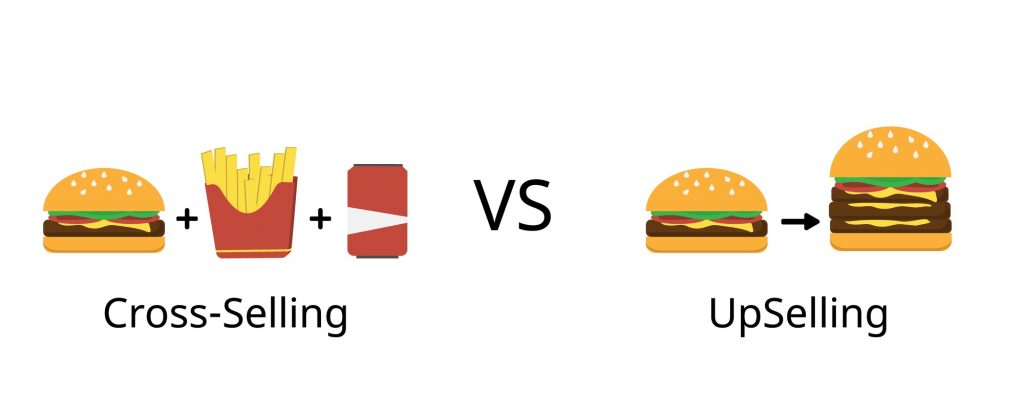
Cross-selling is a technique for improving sales and margins that involves selling add-ons that enhance or complement the main product along with it. For example:
- accessories – smartphone case and headphones, laptop bag;
- consumables – cartridges for a printer, capsules for a coffee machine;
- related products – shoe polish for shoes, guitar strings.
Use “This is being bought” blocks on product cards, offer relevant presales in the shopping cart and order confirmation emails. Analyze your order history to personalize cross-sales to meet the preferences of specific customers.
Another similar methodology is upselling. According to it, it is necessary to offer customers more expensive and functional versions of the product instead of the originally selected one. As an example:
- offer to buy an iPhone Pro instead of the base model;
- show a potential customer a more expensive car with parktronic and climate control;
- sell an annual subscription instead of a monthly subscription.
To make the upsell work, you’ll need to clearly demonstrate the benefits of the more expensive option. Highlight the key benefits of the upgrade – more memory, additional features, extended warranty, etc. The price difference should be justified by the benefits. Apply this approach during product selection, at the checkout stage, as well as in email and SMS newsletters.
Personalize offers
By offering each person relevant items, services and promotions, you show that you value them and take their personal preferences into account. Personalization starts with data collection and analysis:
- Segment your customer base by key attributes – demographics, purchase history, interests, etc. This will allow you to identify groups with similar characteristics and behavior patterns.
- Make detailed portraits of the representatives of each segment. Include socio-demographic data (gender, age, place of residence, etc.), psychographic characteristics (preferences, lifestyle), and behavioral information (what they buy, how often, on what occasions).
- Regularly supplement customer profiles by collecting data from all points of contact – website, mobile app, offline stores, social media, customer service, etc. Pay attention to search queries, reactions to newsletters and advertisements.
Once the data is in, use the insights gained to personalize the communication:
- Make relevant offers in “You’ll Like” blocks and follow-up newsletters based on the user’s interaction history.
- Create customized promotions and promo codes based on the age of the last purchase, preferred categories and brands.
- Adapt the content of newsletters, push notifications and ads to the interests of specific segments of your target audience. Experiment with different creatives, offerers and calls to action.
- Send surveys, offer to leave a review in exchange for bonuses and discounts.
Personalization can work wonders. By receiving offers and content that perfectly matches their needs, the customer feels that the brand knows them well and cares about them. This breeds trust, loyalty and a desire to buy again and again.
Run promotions on social media
Social media is a great platform to increase engagement and strengthen brand relationships. Here are some ideas for improving engagement on social media:
- Collaborate with bloggers and opinion leaders who are trusted by your target audience. They can use product reviews and their personal example to encourage subscribers to take an interest in the brand.
- Hold regular contests and prize drawings. Encourage participants to perform actions that increase reach and engagement – likes, comments, reposts, friend tags. But avoid overly complex mechanics that will scare people away.
- Run flash mobs and Challenges that will inspire users to create their own content with your product. User Generated Content (UGC) will increase brand visibility and the trust of potential customers.
- Encourage reviews and product discussions. Respond promptly to comments, even negative ones. Your concern and openness to dialog will build trust and connection with your audience.
Create a referral program
Satisfied people are eager to recommend their favorite brands to their friends and acquaintances. Why not reward them for it? The essence of a referral system is that you reward existing customers for recommending you. For example, give them bonuses or gifts for each friend referred who made a conversion.
To run a referral program:
- Determine the target actions for which a person is rewarded (purchase, registration, etc.).
- Think through the optimal size of the reward, which will be valuable enough for the participants, but economically justified.
- Choose a reward format – gift, cashback, bonus points, etc.
- Provide for a two-way benefit – a reward not only for the person who invited, but also for the newcomer.
- Make participation in the referral system as simple and intuitive as possible.

